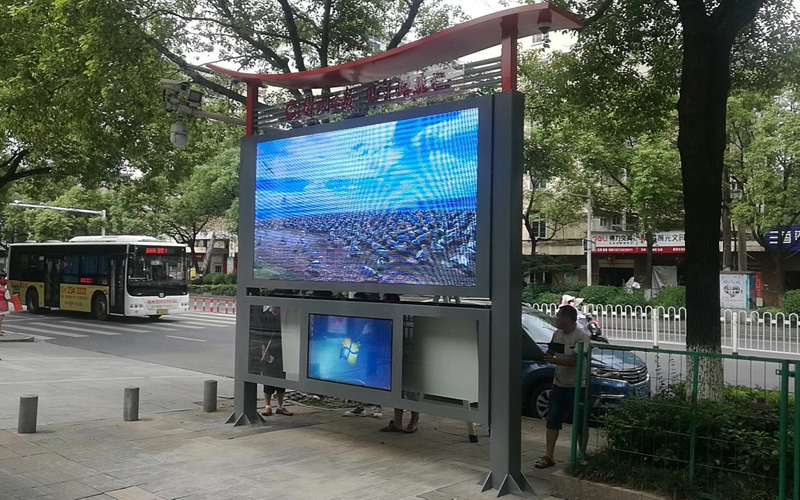Outdoor advertising, that is, advertising that uses visual or experiential media such as billboards and street signs to deliver to outdoor audiences. This kind of advertising occupies millions of screens and lightboxes around the globe in many forms.
1. Why outdoor advertising works
“Shot on iPhone” is Apple’s long-running advertising contest that recognizes the best photos taken by amateur photographers with iPhones and displayed them as outdoor advertising billboards. Apple, a world-class technology company, is a well-known loyal user of outdoor advertising for one simple reason: outdoor advertising works greatly.
Why is outdoor advertising effective? Outdoor advertising is different from digital advertising, which interferes with the online experience and people have long learned to ignore it. On the contrary, outdoor advertising has become one with the world around it and will jump into the eye for granted. Excellent outdoor advertising is very visually attractive. It can stand out from the surrounding clutter, attracting the audience’s curious attention, which is an effect that the online advertising cannot achieve. Google and Facebook are home to the world’s largest digital advertising platforms, but they use outdoor advertising extensively, and it’s easy to see why.
2. The digital advantage of outdoor advertising
Digital OOH advertising has advantages over traditional forms. Most obviously, digital displays can display unique moving images with visual appeal that static images cannot achieve. Another point is that digital displays are often controlled by a back-office computer, which opens the door to some cool ads.
Digital ads can be triggered by certain underlying conditions – time, weather, sports scores, etc. This way, brands only need to buy ad space during optimal audience contact hours. In the case of ice cream advertising, for example, a hot summer day is more attractive than a mid-winter. Digital OOH advertising can be taken to the next level. You can connect more technology to the display and its control computer to generate interactive ads that let people passing by influence what the screen displays. You can also create fun augmented reality experiences that are sure to wow viewers.
Another important advantage worth mentioning is that creating digital OOH ads is now easier than ever. Tools like ChatGPT enable users to log in to upload creatives, select target audiences, or showcase content, and launch an ad in just a few hours.
3. Programmatic outdoor advertising fuels the wave
Like online digital advertising, digital OOH advertising can be programmatically purchased. This means that ad slots can be automatically purchased based on buyer criteria, which can be specific audiences or based on environmental conditions such as the weather, competition, time of day, etc. mentioned above.
4. Use data to accurately target audiences
WITH THE HELP OF AUDIENCE MEASUREMENT PLATFORMS SUCH AS SUNTUNE, MANY OUTDOOR ADVERTISING SCREENS ARE NOW EQUIPPED WITH CAMERAS THAT CAPTURE REAL-TIME INFORMATION SUCH AS IMPRESSIONS AND REACHER AGE, DWELL TIME, GENDER TO ACCURATELY ESTIMATE AD IMPRESSIONS, LOCATION DATA, AND AUDIENCE INSIGHTS. Armed with this information, advertisers can gain insight into ad engagement and derive more accurate ad analytics.
As we move into a cookieless world, first-party data, or data collected directly by advertisers, will become increasingly important. For example, retailers often invest heavily in customer loyalty programs to uncover important insights into their customer base. This data helps the retail trade sector target specific customer segments through outdoor advertising.
5. Use outdoor advertising to capture the market behind cookies
While digital advertising solution providers such as Google have promised that online advertising will provide modern targeting capabilities, targeting and measurement difficulties remain to be solved in a short period of time. When it comes to digital OOH advertising, targeting and reporting never rely on deep understanding of individual audiences. Instead, the field evolved around identifying crowd trends, where advertisers can reach interested audiences without intrusive data such as user identities.
The use of data still needs to follow the principle of Less Is More. The basic design principles that once made outdoor advertising shine have not changed, and today they are just as important, if not more important, so that serious advertisers can excel in the field of outdoor advertising.




